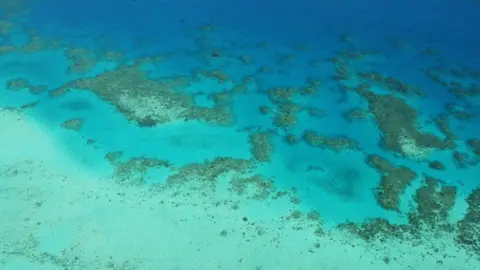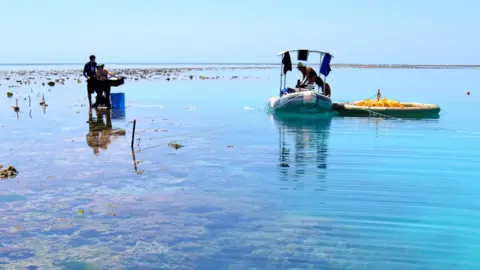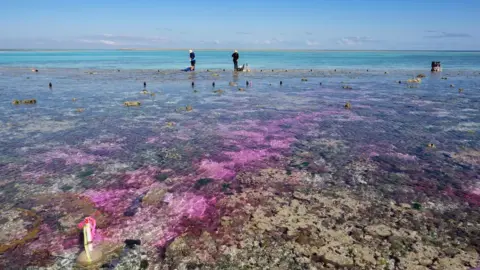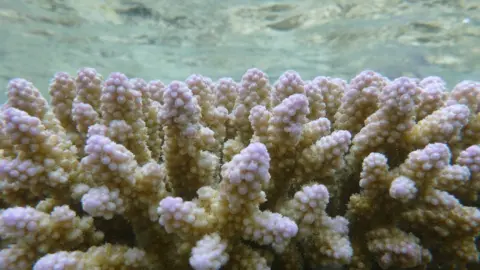Rising carbon dioxide levels impair coral growth
 Getty Images
Getty ImagesCoral reefs are under threat if atmospheric carbon dioxide levels continue to rise, new research has shown.
When CO2 dissolves in the ocean, it raises the water's acidity level.
This prevents a build up of calcium carbonate, which corals draw from seawater to build their skeleton.
The study, published today in Nature, was conducted on the Great Barrier Reef in Australia.
This marks the first time that ocean acidification has been tested in this way on a natural coral reef community, say the paper's authors.
Coral neighbourhoods
Previous lab-based studies have focused on how particular organisms are impacted by ocean acidification.
"But when we try to scale that to understanding how individual ecosystems respond, it would be comparable to looking at a single tree and saying that's how a rainforest would respond," said Dr Rebecca Albright from the California Academy of Sciences, lead author on the study.
 Aaron Takeo Ninokawa
Aaron Takeo Ninokawa Dr Claudia Benitez-Nelson at the University of South Carolina described the research as exciting.
"We have very few studies that directly examine the impact of ocean acidification in the field, much less at the ecosystem level. Coral ecosystems are unique and complex. Trying to emulate the diversity of such ecosystems is difficult if not impossible," she said.
A delicate balance
Dr Albright and her team worked on One Tree Island, off the coast of Queensland.
The system of lagoons on the site have a very particular structure, which means that water flows in one direction across the reef flat for 60 minutes just after low tide each day.
This allowed the scientists to introduce CO2-saturated water to the lagoon and observe its impact.
 Aaron Takeo Ninokawa
Aaron Takeo Ninokawa The study was conducted across 30 days in 2016 and showed drop of about a third in calcification - the amount of calcium carbonate sucked out of the water by coral.
This reduction doesn't lead directly to coral death in the way that bleaching does, explained Dr Albright. But it does impair the coral's growth, and ability to repair and reproduce.
In the wake of bleaching events, which are caused by increased temperatures, corals will be less able to recover if the ocean's pH continues to drop.
Life in 2060
The team replicated the ocean acidity levels that are likely to be present by the middle of this century.
"Ocean acidification studies are critical today with the poorly controlled emissions of greenhouse gases, especially CO2," said Dr Patila Amosa, a chemical oceanographer from the National University of Samoa.
 Aaron Takeo Ninokawa
Aaron Takeo Ninokawa Pre-industrial-era oceans had a pH of 8.2. Current measurements at the site are 8.1, and the acidified water introduced for the study had a value of approximately 8.0, marking a significant impact on the ecosystem from a relatively minor change.
Dr Benitez-Nelson looks forward to further work in this area, particularly on the combined impact of acidification and temperature.
"Studies such as these are really the next step to understanding what the future may hold for coral reefs."
